Pastizzi, Prickly Pear Liqueur, and Brave Knights
Malta is a small set of islands in the Mediterranean Sea which, because of it’s strategic importance, has been conquered, occupied, and put under siege repeatedly by foreign powers.
Each of those invaders has left a mark on Malta from the original Sicilian settlers whose ancient temples can still be seen to the British who made English an official language on Malta and only left after Maltese independence in 1964.
A Short History
Malta may be the smallest country in the European Union, but these limestone rocks have a history packed with war and foreign invasion.
At one time, during the last major ice age, there was a land bridge between Sicily and North Africa that included what is now Malta. When sea levels rose, only the highest peaks were above the waterline, including the three major islands of Malta (Malta, Gozo, and Comino).
Settlers from Sicily were the first to arrive in Malta around 5,900 BC. Phoenicians and Carthaginians had the run of Malta for about 600 years until the Romans took over in 216 BC.
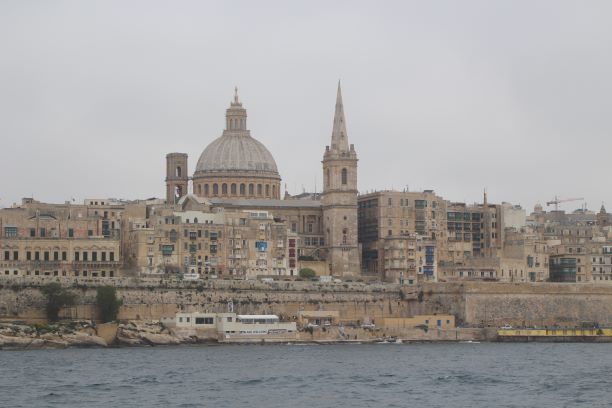
Malta became one of the first Christian outposts when Apostle Paul shipwrecked there in 60 AD, converting the Roman governor and the local populace.
The Byzantines took their turn after the fall of the Roman Empire. Then, in 870 the Aghlabids, an Arab empire from present-day Tunisia, conquered both Malta and Sicily. The Muslims ruled for 200 years until the Normans took over and it took an additional 200 years before Malta was completely re-Christianized.
Malta became a part of the Kingdom of Sicily and control wasn’t ceded until 1530 when the Order of the Knights of St. John by decree of the King of Spain were put in charge. The Knights trace their history to 603 when Pope Gregory I commissioned a hospital to be built in Jerusalem to care for pilgrims.
In 1565, the Ottoman Empire sent 40,000 soldiers to take Malta in what became known as The Siege of Malta. 700 Knights and about 8,000 Maltese soldiers were able to defeat the Ottomans. The Knights of St. John built hospitals and fortifications on Malta and are celebrated as heroes.
But, the Knights were defeated by Napoleon in 1798. The French only lasted two years on Malta before the British, arriving on the the request of the Maltese, drove them out and took sovereignty over Malta.
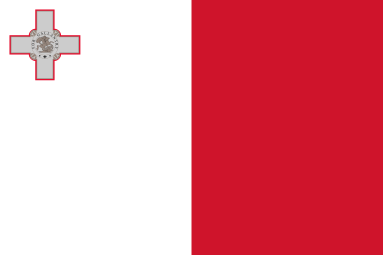
During World War II, Malta was an important base for British operations. As such, it was bombed mercilessly, first by the Italians and later by the Germans. So heavy were the losses that in 1942 the entire population of Malta was awarded George Cross for bravery. Malta became an independent nation in 1964 and the George Cross is depicted on the flag of Malta.
Foodie Malta
Pastizzi
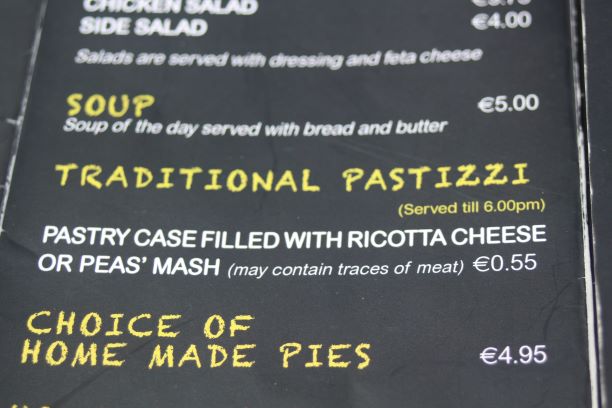
Almost every culture has a version of vegetables or meat stuffed inside dough. Dumplings, calzone, and pasty are all examples.
In Malta, there’s the pastizzi. A pastizzi is phyllo dough filled with ricotta cheese or mashed peas, folded into a clam shell shape and baked. You can find pastizzi practically anywhere on Malta, from bakeries to street food vendors to restaurants. And best of all, they usually are around a buck!
My favorite place to get a pastizzi is at Fontanella Tea Garden in Mdina. Mdina should be on your list when you’re in Malta (see below), and Fontanella is a required stop when you are there. They are known for their cakes, which are good, but I like to get a pastizzi and sit upstairs on the terrace for the best view of the countryside.
Imqaret
While pastizzi might be nod to the Greek influence in Malta, imqaret is decidedly Arab in origin. Arabs from north Africa ruled Malta for about 200 years starting in 870AD.
Imqaret is a deep fried pastry filled with dates. Kind of like a Fig Newton, but way more delicious.
The famous Dates Kiosk near the entrance to Valletta was closed a couple years ago for a renovation project, so you can’t get your imqaret there any longer. But, you’ll see impromptu stalls all around Malta selling imqaret and any local festival will undoubtedly have them as well.
If you can’t find a pop-up tent or mom and pop store selling imqaret, the Maypole grocery in Rabat has it.
Tal-Malti (Maltese Bread)
No trip to Malta is complete without a some of the famous sourdough bread. The crusty bread is traditionally baked in wood-fired ovens and is sold in any bakery in Malta.
For a real bread-centric experience, head to the town of Qormi. Here, there are more bakeries than anywhere else on Malta and many of them are world-class.
The Old Bakery lives up to its name, having opened nearly 150 years ago. Their bread is extraordinary and they also have a full range of pastries as well.
Emanuel’s Bakery is probably best known for their pizza, but they’ve been making bread daily for fifty years. Of course the pizza is great, since its crust is made with Emanuel’s dough, but don’t miss out on the bread.
Ftira
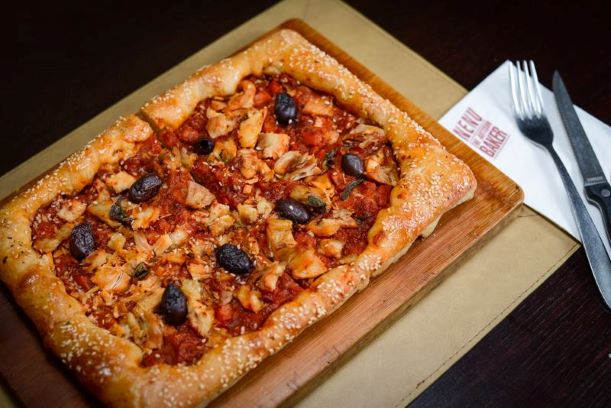
Being so close to Italy it is no surprise that there’s a lot of Italian food on Malta. But, Maltese cuisine has also taken several Italian dishes and given them their own unique Malta spin. Ftira is one of those.
Ftira is Maltese pizza. But, their version has no tomato sauce. Plenty of mozzarella, olives, onions, and sardines, though. The best place to go for ftira is Nenu the Artisan Baker.
Timpana
Some folks might call it Maltese mac n’ cheese, but it’s really much more than that. Timpana is baked macaroni with tomato sauce (usually a Bolognaise-style meat sauce), eggs, pecornio cheese, and, sometimes, chicken liver. It’s baked in a crust (yeah! more bread) and is sliced into slabs of yummy carb-ness.
You normally won’t find timpana at a fancy restaurant in Malta. Instead, look for it in small cafes and the food kiosks that populate much of the island.
Drinking in Malta
Cisk
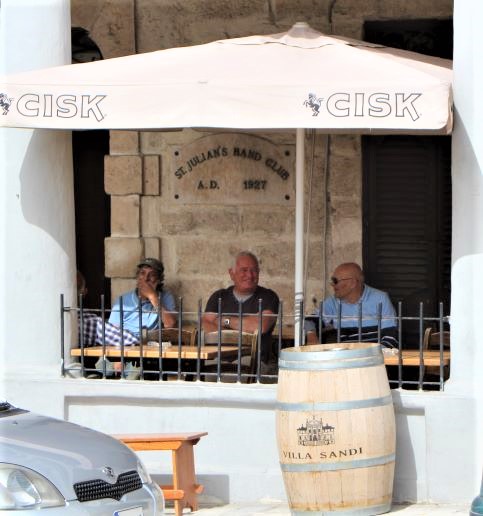
When traveling to a new place I like to sample the local beer. Not just the microbrews and craft beers, but the mass produced suds as well. This can be a disappointment. I mean, the most popular beer in the U.S. is Bud Light. Nobody’s traveling to America for a taste of that.
But, in Malta, Cisk is a pretty darn good beer. The most popular choice is the Cisk lager, but keep an eye out for the Cisk Export or the Cisk Pilsner. They’re both very good.
Kinnie

Simonds Farsons Cisk, the same company that brews Cisk, also makes the most popular soda in Malta. Kinnie gets it’s unique flavor from bittersweet oranges and wormwood, a medicinal herb. Its bittersweet flavor is popular by itself but some folks mix it with gin, rum, or Negroni for a Kinnie cocktail.
Wine
Wine production in Malta is minuscule with less than 2,000 acres of vines in the whole country. For that reason, you should try some Maltese wine when you visit. The people of Malta drink almost all the wine produced there making it difficult to get your hands on a bottle outside the islands.
While Chardonnay and Merlot are grown in Malta vineyards, the local Ä ellewza (red) and Għirgentina (white) varietals are must-trys.
The local red (Gellewza) is often made into a sparkling pink wine and even when it is made into a still wine, it often has a lovely effervescence. Girgentina is a fruity white. Almost any good restaurant in Malta will have several local wine selections.
Or, order Maltese wine online at Made in Malta Products. That’s the only place I’ve seen Maltese wine. Even the big online wine sellers don’t seem to have any. If you do decide to order online, be prepared for hefty shipping costs.
Delicata winery has been making wine on Malta for over 110 years. Check their website for special events when you can visit because they don’t normally allow the public in for tastings.
Bajtra
Malta has a hot, dry climate which allows the prickly pear cactus to grow like a weed. The cacti’s sweet fruit is used to make soda, candy, or enjoyed raw once the stingy spines are removed.
One producer even makes a prickly pear liqueur in Malta. It’s called called Zeppi’s Bajtra and it’s getting quite popular in Malta. Bajtra can be served cold as an aperitif or mixed with Chardonnay and lemonade for a quaff-able cocktail.
Things to Do in Malta
Valletta
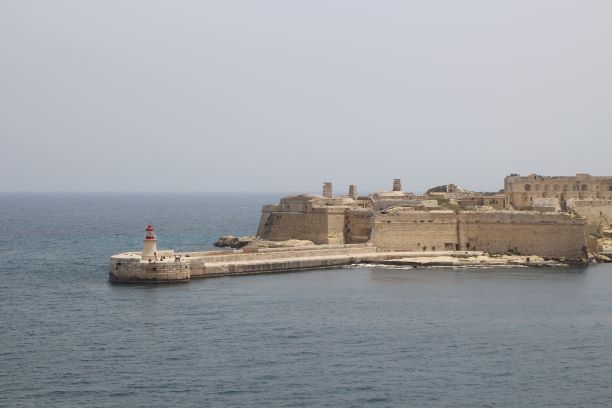
The most spectacular views of Valletta are not from a high tower but from sea level. You can hire a boat and take a trip around the harbour but my favorite way to see Valletta is from the ferry that crosses every few minutes.
From Sliema, you get a beautiful view of the capital city, which is only enhanced at night. And, it’s cheap. Just a few euros roundtrip.
The Knights of St. John hold an important place in Maltese culture. They built fortifications and hospitals on Malta and let the fight against 40,000 Ottomans during the Siege of Malta in 1565.
There are sights related to the Knights all over Malta, but one one of their lasting legacies is the Sacra Infermeria, or hospital. The building is now a conference center, but tours are available, during which you’ll learn about the Knights and their treatment methods.
Next to the hospital is Fort St. Elmo, which houses the National War Museum. Here, the Knights of St. John built a fortification from which they defended Malta from the Ottoman invasion in 1565.
It’s not all war and conquest in Malta, though. The Upper and Lower Barrakka Gardens are a peaceful retreat in the city.
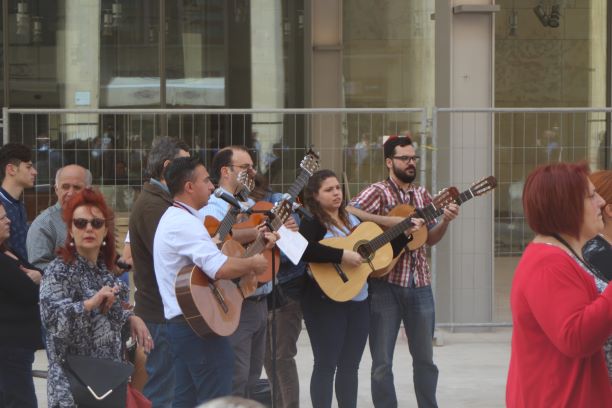
Valletta is a small city (and the smallest European capital), but it is so crammed with interesting sights that it’s easy to miss cool stuff. That’s why I recommend a walking tour. The Valletta Walking Tour takes three hours and hits all the high points of the city. Once you take the tour, you can decide if there’s anything you want to go back see for a longer visit.
And, speaking of missing out on cool stuff, I have to tell you my favorite story about Valletta. Karen and I were rushing off to some site, I don’t remember what exactly, when I turned a corner and heard Karen’s voice calling for me. I went back and saw her looking up at a window in an apartment building. A woman was lowering a basket with a rope from the third floor to a man waiting below on the street. When the basket reached him he fished some money from the bottom and placed a loaf of bread in the basket. The woman hoisted the basket back up to her window with the rope and soon the basket, the bread, the rope, and the woman disappeared from the window. We watched for 30 minutes as this scene was repeated several times at apartment buildings along the block.
For me, it was an important lesson. Never let your rush to get somewhere keep you from enjoying everyday life. Luckily, Karen reminded me of that in Malta.
And, if you watch the video Karen took, you’ll see that the windows on the characteristic wooden balconies of Valletta open by a hinge on the top. Very charming.
Mdina
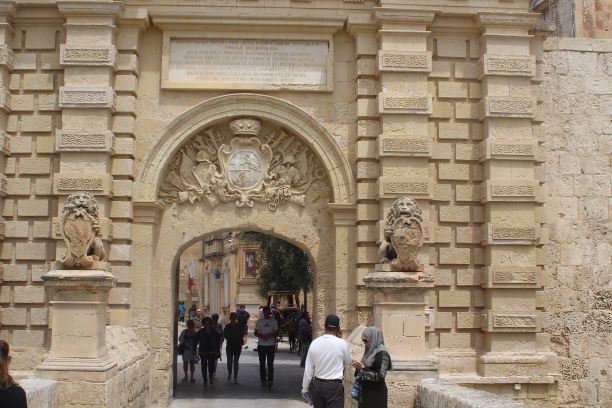
Mdina is a medieval town situated inland. The fortified walls, baroque cathedral, and palaces make it a must-visit when in Malta.
Game of Thrones fans will recognize Mdina as King’s Landing. Whether you love GoT or not, the gates to Mdina are awe inspiring.
Upon entering the walled city, the origin of Mdina’s nickname, “The Silent City,” becomes apparent. While the rest of Malta is clogged with car traffic, Mdina is pedestrian only.
If you really want to get the full effect of “The Silent City,” take a stroll in the evening after the cruise ship passengers have left. The streets were built in a curving fashion to help defend it (soldiers could hide around every bend). This makes wandering Mdina seem quite peaceful and solitary at night.
The 1693 earthquake that leveled much of eastern Sicily (check out my post about Catania for more on that), also destroyed much of Mdina, though without the loss of life that was experienced in Italy. So, parts of Mdina had to be rebuilt, resulting in the construction of St. Paul’s Cathedral.
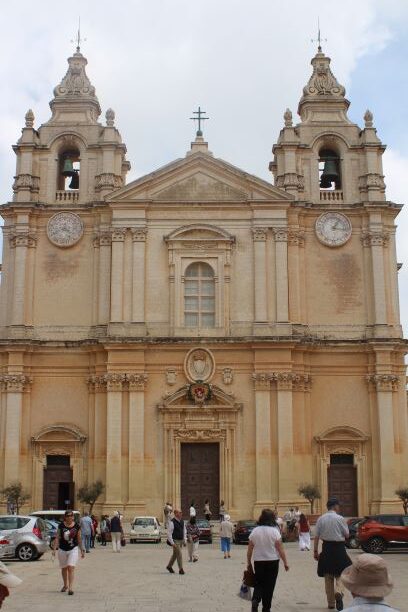
The site of the cathedral is important because this is where Apostle Paul, shipwrecked on Malta in 60AD, met the governor of Malta, Publius. When Paul supposedly cured Publius’ father and many other Maltese, Publius and the rest of the island’s resident converted to Christianity.
A cathedral was built on the site, fell into disuse during the Arab conquest of Malta, and later a Norman church was built, which was expanded over the centuries. That’s when the 1693 earthquake struck and damaged the cathedral beyond repair and the current church was built.
Inside, you’ll see how important the legend of Publius and St. Paul is to the faithful in Malta. The painting “The Conversion of St. Paul” and the fresco “St. Paul’s Shipwreck” are both on display.
Door knockers
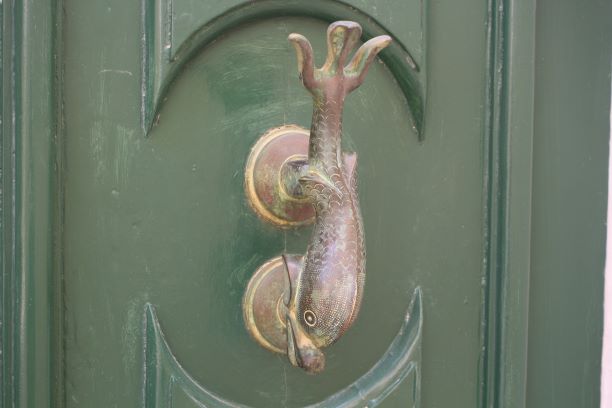
One thing you may notice in Malta is the islanders’ obsession with door knockers. Every door, it seems, has a fancy brass door knocker rather than a modern doorbell. And you can see from the wear on the metal that these guys get a workout!
Beaches
One of the big calling cards for Malta is her gorgeous beaches. Europeans and Americans in the know travel here for perpetually sunny weather, crystal clear water, beautiful beaches and water sports.
Many beaches only have lifeguards during the summer months. Ask them about swimming conditions before entering the water and be aware of undertows which can be severe, especially during the winter months.
Blue Lagoon
The Blue Lagoon is one of the top tourist attractions in all of Malta which is why I’m listing it. The problem is that the beach is very small and gets very, very crowded with tourists.
If you decide to go (it’s on the island of Comino, a half hour ferry ride from Malta) my advise is to get the earliest ferry you can and stake out your spot on the beach. Even then, you’ll quickly be swallowed by the tourist mob. Don’t get me wrong, the Blue Lagoon is incredibly beautiful, it’s just that there are some places off the beaten path I like better.
Imgiebah Bay
If a quiet and secluded beach is what you’re looking for, ImÄ¡iebaħ Bay is the place to be. You’ll need to park near the closed Selmun Palace and walk down to the beach. There’s no facilities here, so bring everything you need and hit the bathroom beforehand.
The walk is worth it because the water is clean and while the beach is small, very few people ever visit.
Mellieha Bay
Mellieha Bay is also a very popular beach, but it is much larger than the Blue Lagoon, so even though it can get crowded (especially on the weekends) it’s doesn’t feel as crushing.
The beach is Blue Flag certified meaning it has clean water and good environmental practices. The beach is relatively easy to reach by taking the 222 bus.
There’s lots of restaurants and beach shacks nearby as well as beach chair/umbrella rental. Jet skiing, kayaking, and windsurfing are all popular here.
Ghajn Tuffieha
Another Blue Flag certified beach, Ghajn Tuffieha is more secluded because of the long staircase you must descend to reach it (and climb after a day at the beach). That doesn’t mean it doesn’t get crowded at times. Lots of people gather here for the gorgeous sunsets.
Dwerja Bay
On the island of Gozo (a short ferry ride from Malta), Dwerja Bay is a snorkler’s paradise. Divers can explore the 250 foot tunnel that connects to the Inland Sea.
Transportation
Malta International Airport (MLA)
Only airport in Malta. Has service to most cities in Europe but no direct flights to North America.
Luqa LQA 4000, Malta
Ground Transportation
Malta’s bus service reaches the airport with quick and efficient service.
Taxis are also plentiful at the airport. Buy a fixed cost ticket at the Welcomers’ Hall booth.
If you’re staying at one of the larger hotels on Malta, there is a hotel shuttle bus service to get you there from the airport.
There are several rental car companies at the airport.
Malta Public Transport
Malta Public Service buses cover most of the islands.
Tallinja Card
Money saving card for multiple bus trips.
Valletta Ferry Service
Quick and inexpensive ferry service between Valletta and Sliema.
Gozo Channel Company
Ferry service from Cirkewwa, Malta to Mgarr, Gozo. Quick and inexpensive ride.
Bolt (formerly Taxify)
Rideshare in Malta. Payment is through the app. Also has a food delivery service. Often less expensive than Uber.
Things to Do in Malta
Valletta Walking Tour
Three hour walking tour of Valletta
St. John’s Co-Cathedral
Beautiful baroque cathedral with Caravaggio’s “Beheading of St. John” painting displayed inside.
Triq San Gwann, Il-Belt Valletta, Malta
Upper Barrakka Gardens
Fantastic views of the harbour. Take the elevator to get back to ground level and the ferry.
Battery Street, Valletta, Island of Malta VLT 1220, Malta
Lower Barrakka Gardens
More spectacular views.
Casa Rocca Piccola
16th century palace open for guided tours. Also has a guest house if you want to stay overnight.
74 Republic Street, Valletta, Malta
Basilica of Our Lady of Mount Carmel
Beautiful church whose dome defines the Valletta skyline.
Old Mint Street, Our Lady of Mount Carmel, Valletta, Malta
Mediterranean Conference Center
Once home to the Knights of St. John hospital. Interesting tours available.
Triq l-Isptar ,Valletta, Malta
Fort St. Elmo
Knights of St. John fort and current sight of the National War Museum.
Auberge de Castille
Once a castle for the Knights of St. John, now the office of the Prime Minister.
Valletta Food Market
Lots of choices housed in a gorgeous renovated Victorian building.
Triq Il-Merkanti, Valletta, Malta
Fort St. Angelo
The magnificent fort on the harbour is now open to visitors. The prison underneath the fort once held the painter Caravaggio.
Xatt l-Assedju l-Kbir 1565, Birgu, Malta
Mdina Walking Tour
Two hour walking tour of Mdina
St. Paul Cathedral
Stunning Baroque cathedral in Mdina.
Domus Romana
Small museum with interesting first and second century Roman mosaics.
Museum Esplanade, Rabat, Island of Malta RBT 05, Malta
Hagar Qim
Prehistoric temples dating back as far as 3,600 BC.
Hal Saflieni Hypogeum
Ancient burial chamber dating to 3,600 BC. Booking well in advance is essential.
Burial Street, Triq Hal Saflieni, Triq Ic Cimiterju, Paola, Malta
Mellieha Bay
Blue Flag certified beach.
Triq Il-Marfa, Mellieha, Malta
Little Armier Bay
Recommended beach in Mellieha.
Triq L-Armier, Il-Mellieħa, Malta
Imgiebah Bay
Secluded beach in Mellieha
Ghajn Tuffieha
Descend the long staircase for beautiful sunsets
Dwerja Bay
Great spot for diving and snorkeling on the island of Gozo.
Xlendi Beach
Great for swimming
Wied il-Ghasri
Tiny secluded beach in Gozo
Coast from Marsalforn, Ghasri, Island of Gozo, Malta
Blue Lagoon
Crowded beach on the island of Comino.
Popeye Village
Sets of the Robin Williams film “Popeye.” Tacky fun for the family.
Paceville
The nightlife and gambling hub of Malta. Lots of discos and loud bars.
Paceville, St. Julian’s, Malta
St. Joseph Church
Baroque church in Msida. Best time to visit is July during the town feast.
Ix-Xatt Ta’ Xbiex, Msida, Malta
Ggantija Temples
Ancient temples from 3,600 BC in Gozo.
Xaghra, Ggantija, Island of Gozo, Malta
Old Prison
Prison dating to Knights of St. John era with interesting graffiti made by inmates.
Pjazza Katidral, Victoria (Rabat), Malta
Food and Drink
St. Julian’s Band Club
Terrific local coffee cafe adjacent to 1927 Restaurant
31 St. George’s Road, St Julian’s, Malta
Peperoncino
Highly rated St. Julian’s restaurant in a lovely limestone house setting.
8/9 Bay Street, Saint Julian’s, Malta
Naar
Good for cocktails. Vegan menu available, too.
1 Triq Censu Tabone, Balluta Bay, Saint Julian’s, Malta
Rampila
Restaurant and wine bar with a nice terrace. Limited veg. options.
St Johns Cavalier, Valletta, Malta
Guze Bistro
Well restpected restaurant in Valletta.
22, Old Bakery Street, Valletta, Malta
Nenu the Artisan Baker
The place to get ftira (Maltese pizza).
143, St Dominic Street, Valletta, Malta
Piadina
Inexpensive, cute little cafe in Valletta
24, Triq Santa Lucija, Valletta, Malta
Is-Suq Tal-Belt Valletta Food Market
Food market in a beautifully restored Victorian building
Triq Il-Merkanti, Valletta, Malta
Amorino Gelato
The Italian gelato chain is in Valletta.
36 Republic Street, Valletta, Malta
Fontanella Tea Garden
Best views in Mdina and Pastizzi on the menu.
1 Bastion Street, Mdina, Malta
The Medina Restaurant
Lovely setting for this wonderful Maltese restaurant. Courtyard seats are especially nice.
7 Holy Cross Street, Mdina, Malta
Castelletti Restaurant
Great lemon torts and pastries.
62 St. Paul’s Street, Rabat, Malta
The Old Bakery
Some of the best Maltese sourdough bread.
287-291 Triq Il-Vitorja, Ħal Qormi, Malta
Emanuel’s Bakery
Very good pizza and bread in Qormi. Been at it for 50 years.
Triq il-Mithna, Ħal Qormi, Malta
Mithna
Fancy Maltese restaurant housed in a converted windmill.
58 Triq Il-Kbira, Mellieha, Malta
Cisk
Malta brewer. Seek out the pilsner and Cisk Export.
Kinnie
The most popular soda in Malta
Delicata Winery
Malta’s top winery.
Marsonvan
One of the first wineries on Malta and still one of the best.
Meridana Winery
Winery on the site of an old airfield.
Shopping
Made in Malta
One of the few places you can get Malta wine online.
Bajtra
Maltese prickly pear liqueur. Available is many liquor stores in Malta or online.
The Silversmith’s Shop
Handmade silver jewelry.
219 Republic St, Valletta, Malta
Ellul Wines and Spirits
Nice selection of local and international bottles.
152 Santa Lucia Street, Valletta, Malta
Places to Stay
Casa Rocca Piccola
16th century palace also offers guest rooms.
74 Republic St, Valletta, Malta
Phoenicia Hotel
Recently renovated hotel in the center of Valletta.
The Mall, Floriana, Valletta, Malta
AX The Victoria Hotel
Nice hotel across the harbour in Sliema.
Gorg Borg Olivier Street, Sliema, Malta
Hotel Juliani
Boutique hotel in St. Julian’s.
25 St George’s Rd, St. Julianʼs, Malta
Thirtyseven Gozo
Converted farmhouse in Gozo.
37 Munxar Road, Munxar, Gozo, Malta
About the Author

Brent Petersen is the Editor-in-Chief of Destination Eat Drink. He currently resides in Setubal, Portugal. Brent has written the novel “Truffle Hunt” (Eckhartz Press) and the short story collection “That Bird.” He’s also written dozens of foodie travel guides to cities around the world on Destination Eat Drink. Brent’s podcast, also called Destination Eat Drink, is available on all major podcasting platforms and is distributed by the Radio Misfits Podcast Network.
